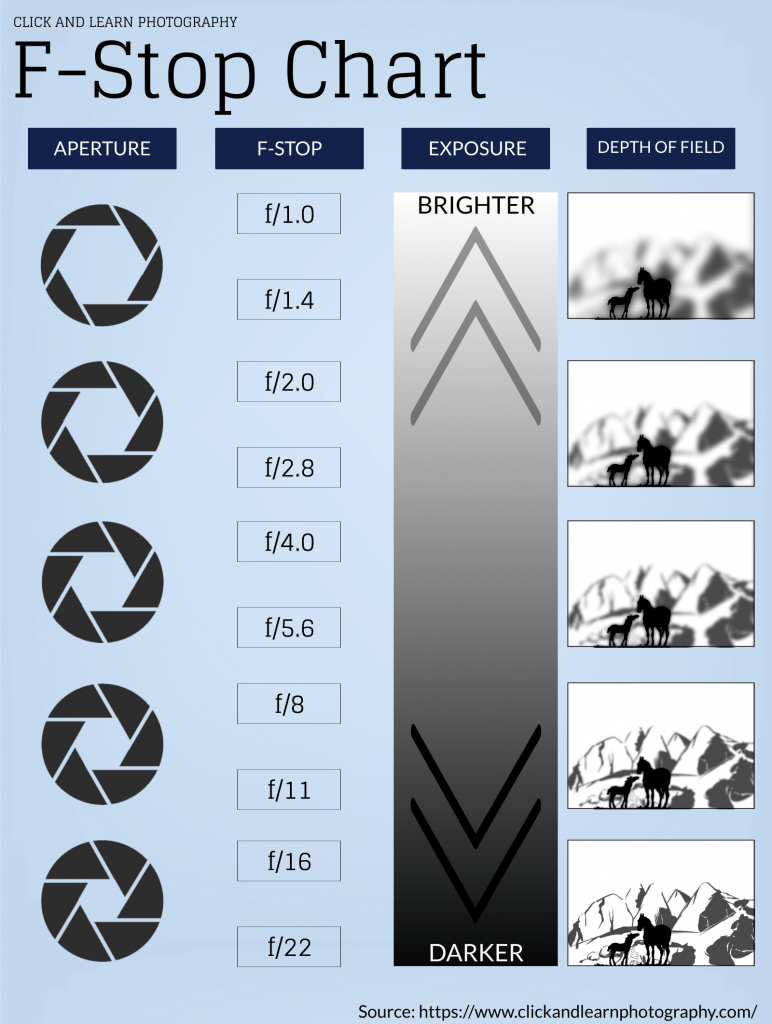All You Need To Learn Aperture And Depth-of-field
It figures out just how much of your photo is in focus and just how much is blurred. The important things I enjoy most about setting my f/ large open is producing those blurry backgrounds that make photos look more professional. If you have ever looked at a picture where the subject is tack sharp but the background is blurry, this is produced by their option of aperture.
The smaller the aperture number like f/ 1.2 and f/ 2.8, then less of the image will remain in focus. That means you will have that good fuzzy background. Plus, if you are shooting in your home and have your aperture large open it assists to hide the mess that might remain in the background.
Aperture In Photography
You desire to see the clear lake, the sharp trees, and the fluffy white clouds. If your aperture is too low, not whatever will be in focus. So a closed aperture like f/14 or more will be what you use. First figure out just how much light you require in your picture.
What Is Aperture? A Photographer's Complete Guide
Then based off of the number of people; if they are on various focal planes, go up as needed. You desire the bulk of the scene in focus for landscape shots so you are going to wish to keep your f/ at 10 or greater.
Everything You Need To Know About Aperture
The aperture system in the lens that permits basically light to come in is formed of a series of opaque "blades". When the blades are open, your cam sensor will capture more light, whereas as the blades gradually close, less light will hit your sensor. In a comparable way to our eyes, given that it works like the human pupils: the larger they are, the more light will go through and vice versa.
Big apertures are likewise known as fast apertures because they enable you to reduce the direct exposure time, and small apertures are likewise referred to as slow apertures, since they allow you to increase the shutter speed. Depending upon what you want to record, there are certain scenarios where you should not change your ISO and shutter speed; aperture will be the key to a proper direct exposure.
What Is Aperture? An Introduction To Aperture In Photography
According to the physics laws in optics, you'll have the ability to capture, implying more locations of your images will be out of focus and less sharp. On the other hand, you'll see in your image, implying a bigger proportion of the image will remain in focus.
The very same thing occurs when you set a little aperture. In that case, there is a phenomenon associated to aperture in photography which is an optical impact that results in poorer quality throughout the image. You can see this phenomenon as you begin closing the aperture above f/16 values.
The Ultimate Guide To Aperture
To compute this sweet spot, approximately move two to 3 F-stop worths from the maximum aperture of your lens. For instance, if the optimum aperture in your lens is f/4, this would be in between f/8 and f/11/.
Prior to digital photography, the aperture was manually set on the lens by choosing the particular F-value. This altered in digital cameras today. There are still some manual lenses that need you to set the aperture manually, however all the electronic lenses that are suitable with your digital camera will enable you to quickly pick your aperture.
Aperture & Depth Of Field
Beyond all the that we have actually already seen, there are other fascinating negative effects of using various apertures in some light situations. To/sunburst or a moonstar, you'll need to have high F-Stop worths from f/16 to the tiniest aperture on your lens. That method, the sun/moon beams will be sharper. This likewise depends on the variety of blades on the aperture of your lens.

Understanding Aperture In Photography
What is aperture in photography and how does it affect the method our photo looks? Aperture is the most important pillar of the exposure triangle after shutter speed and ISO, so it's vital you understand it! Terms like f-stops and depth of field might intimidate newbie photographers, however they're really not that complicated.
Smaller aperture = darker photo. EASY! Utilizing the aperture to control the quantity of light that comes through your lens is sometimes a creative choice you make. Other times you might be required to select a particular aperture based on the available light you have in your scene.